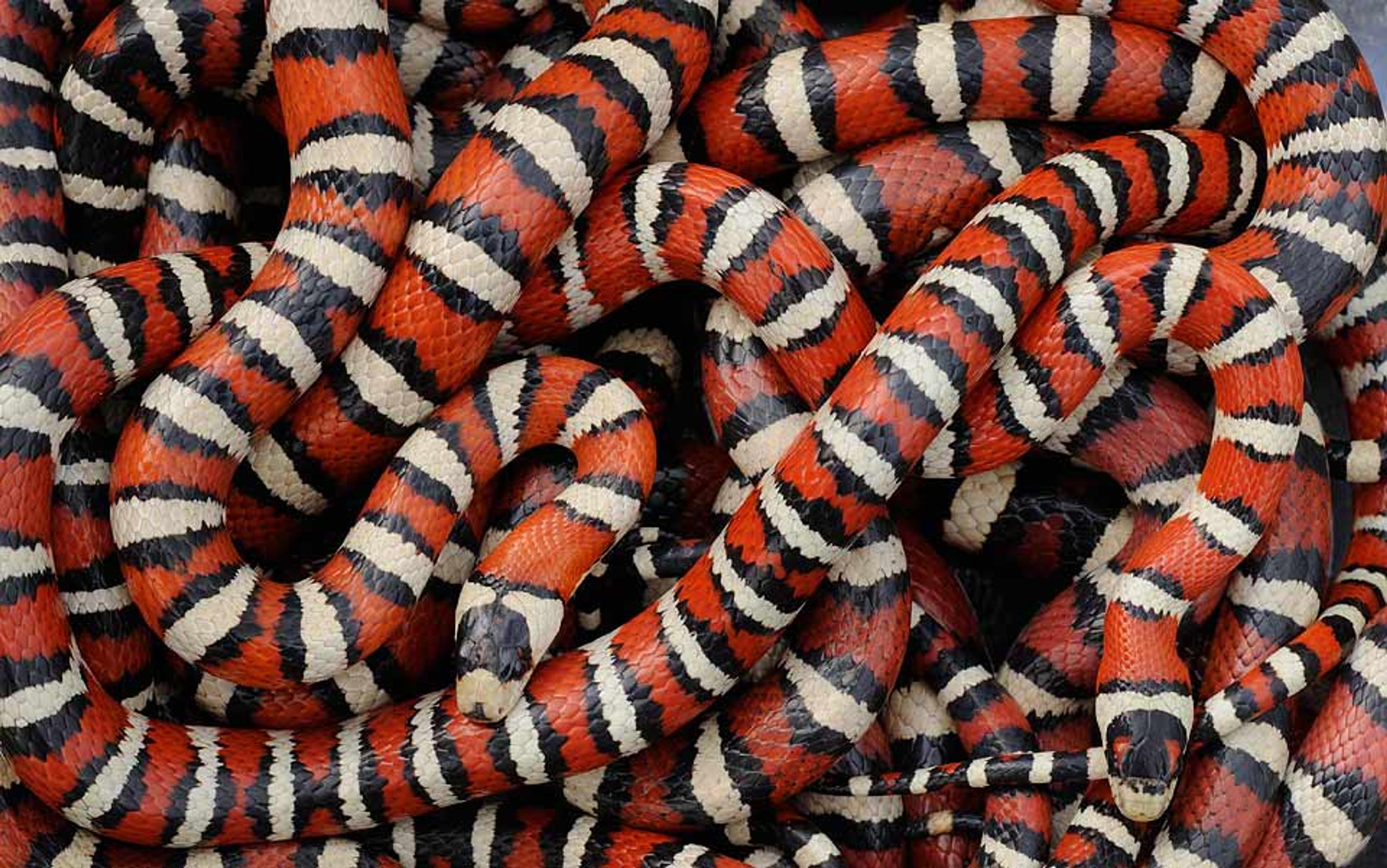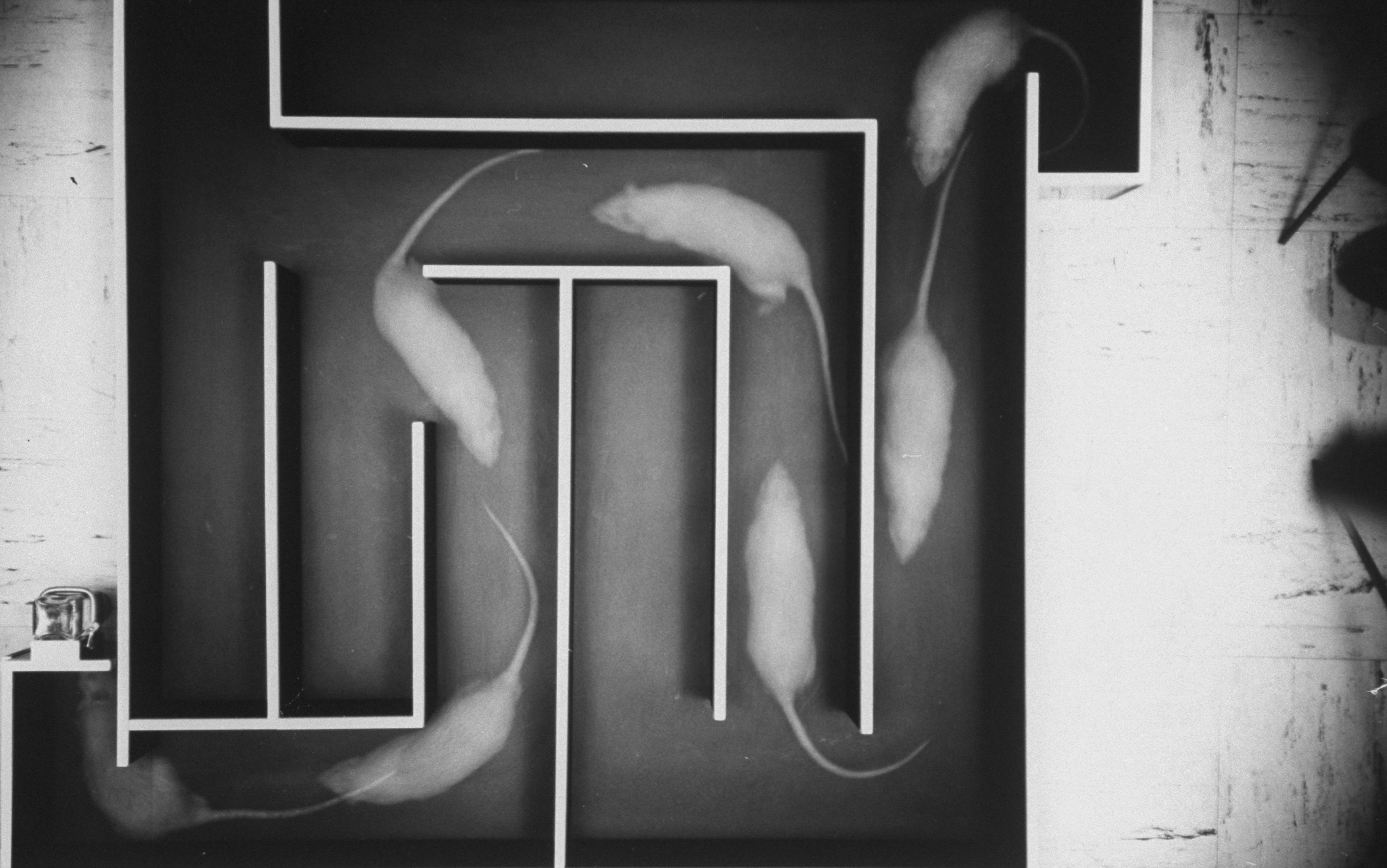It’s the friend who betrays you, the lover living a secret life, the job applicant with the fabricated résumé, or the sham sales pitch too good to resist. From the time humans learnt to co‑operate, we also learnt to deceive each other. For deception to be effective, individuals must hide their true intentions. But deception is hardly limited to humans. There is a never-ending arms race between the deceiver and the deceived among most living things. By studying different patterns of deception across the species, we can learn to better defend ourselves from dishonesty in the human world.
My early grasp of human deception came from the work of my adviser, the psychologist Delroy Paulhus at the University of British Columbia in Canada, who studied what he called the dark triad of personality: psychopathy, recognised by callous affect and reckless deceit; narcissism, a sense of grandiose entitlement and self-centered overconfidence; and Machiavellianism, the cynical and strategic manipulation of others.
If you look at the animal world, it’s clear that dark traits run through species from high to low. Some predators are fast, mobile and wide-ranging, executing their deceptions on as many others as they can; they resemble human psychopaths. Others are slow, stalking their prey in a specific, strategic (almost Machiavellian) way. Given the parallels between humans and other animals, I began to conceive my Mimicry Deception Theory, which argues that long- and short-term deceptive strategies cut across species, often by mimicking other lifestyles or forms.
Much of the foundational work for this idea comes from the evolutionary biologist Robert Trivers, who noted that many organisms gain an evolutionary advantage through deception. For example, among birds, a female can trick a trusting male into believing he is raising his own offspring, when he might be raising the offspring of another male. One of the most popular examples of deception in plants is the Venus flytrap. It looks harmless to hungry insects by lying still, just like every other plant. However, the plant is carnivorous and will snap shut, consuming insects that get too close.
Viral and bacterial infections are deceptive too. The microbiologist Ursula Goodenough at Washington University argues that the co-evolutionary arms race between immune systems and infections is slow and protracted, like a cold war. Some infections, such as tuberculosis, hide from immune system defences inside the host’s own cells. Much like packaging a computer virus in a professional-sounding email, the Trojan horse is later released in the body, where havoc ensues. HIV is even stealthier because it inhabits our very immune cells, rendering them dysfunctional. Using such strategies, the microbes replicate over and over, eventually destroying their opponent army, which is the human immune system.
At some point, all of us will play the role of both the deceiver and the deceived. After all, deception is part of life. Some deceptions can come from a place of love or kindness: ‘Your cooking is delicious!’ But harmful lies abound, and we are victimised by those every day. Some of these can be short-term, such as eliciting personal information with a phishing-style email and then plundering a bank account. Other deceptions are perpetrated for years – take the spouse who has serial affairs. And while it is never an excuse, these tendencies are evolutionary –biological in origin and, like other evolutionary traits, found in a spectrum from mild to intense. In response, we have also evolved the ability to detect deception, but some of us are more attuned.
It was Robert Mitchell, a psychologist at Eastern Kentucky University, who in the 1980s first highlighted deception as a form of mimicry among humans and non-human animals alike. Predators such as the zone-tailed hawk, for instance, evolved to look like non-aggressive vultures in order to confuse prey and engage in surprise attacks. There are spiders in Australia that smell and behave like ants: some are so convincing that the ants will allow a spider to live permanently as one of them. This spider will then feast upon its new friends, but it won’t eat all the ants, or even a significant number; instead, it extracts resources slowly, sustainably, and over time.
As I dug deeper, I found signature patterns of deception, based largely on whether the style was quick and psychopathic, reliant on simple confusion, or slow and Machiavellian, with complex strategy in play. One pattern could be defined in terms of the ‘resource extraction rate’ – whether the individual took everything at once, or a little over time. Another pattern was based on the extent of ‘community integration’ – whether the predator attacked a wide variety of random prey or insidiously established rapport with a specific group. Finally, the equation demanded that I consider ‘detectability’, or how easily a deception could be uncovered and pushed back. These patterns cover virtually every form of deception in the natural world.
Whether a virus or a boiler-room stock scammer, most short-term predators are scattershot, reaching thousands of potential victims in a day
Short-term deceivers often use camouflage to hide from potential prey. Pathogens with short-term strategies, for instance, use hiding spots created by tall protein shells, which they can find on your body’s cells to hide from the body’s immune system. Fast-moving viruses tend to target everyone, not just an individual or two. Consider a virus that spreads through coughing or sneezing, firing off as many infection opportunities as possible in the hopes that a few might take root in another host and propagate again.
In humans, short-term deception might involve simple lies or a slick-looking website. When financial fraudsters perpetrate superficial or short-term deception, they usually extract everything they can at once: in most online or phone swindles, once an account number is obtained, the money is quickly gone. Whether a virus or a boiler-room stock scammer, most short-term predators are scattershot, moving from location to location and reaching hundreds or thousands of potential victims in a day.
This approach is so crude that many of us have become more cautious with time, in essence developing immunity to short-term deceptions because we can detect them on the fly. Previous exposure to a certain type of predator often leaves communities better prepared to fight off the attack. This type of defence can be seen among lizards previously exposed to predatory snakes. Although a few will fall prey, a substantial number are likely to avoid the hunt, fight off the infection, or resist the fraudulent scam.
Long-term deceptions, on the other hand, are integrated, complex and behaviourally based. Often perpetrated by collaborative networks or co-conspirators, they are far more difficult to resist. For instance, there are species of beetles that deceive termites into believing they are one of them. Although the cost is minor to the termites, they unknowingly share resources with lazy beetles: an example of sustained and complex long-term deception.
Among humans, there are deceptions such as embezzlement, where individuals get access to financial accounts by gaining the trust of a company or a single person. The deceiver then alters financial records to hide the theft. Most of these deceptions take a long time to plan and execute. Since acting hostile could blow the cover, these predators seem like team players. Since taking too much at once would topple the strategy, resources are extracted slowly. Because of this immersion in the community and our all-too-human tendency to defend those in whom we have placed our trust, the final component of long-term deception is a victim’s inability to admit that deception has occurred. Our immunity against such deception remains low.
Out of all the species, humans might be particularly vulnerable to this kind of attack. Timothy Levine, an expert in media studies and deception at Korea University in Seoul, has found that in humans (like most social mammals) the default is to believe others. This is a good thing about humans; we care, trust and help one another.
But unlike many other species, we have left ourselves especially exposed. We must look to the natural world for protective strategies so that, like any biological host, we can immunise ourselves against psychopaths who manipulate, disguise and pilfer our resources while our eyes are closed. Parents must share with their children lessons learnt about deception. We must encourage questioning, especially when it comes to the motives of someone who could be in a position to deceive. And the community must work to protect itself. Trivers discusses how species of birds evolved to warn other birds of a nearby predator. Although such self-exposure has a cost to the bird that issues the warning, predators that are frequently thwarted will avoid certain communities, thus increasing the likelihood of everyone surviving.
There is no definitive way to always discern truth from deception, but strategies borrowed from nature could serve as a guide. The first is exercising caution. Animals likely to cross paths with the lethal coral snake, for instance, learn to keep a distance from the lookalike king snake as well until absolutely certain which is which. Premature trust can lead to disaster, no matter how good our instincts might be. A second warning sign can be unexplained aggression or irritation over simple questions. Much like a predator hiding in tall grass, once prey get too close, the time to strike is now or never. When simple questions lead to aggressive or defensive responses, it might be cause for concern.
By reminding individuals how convincing skilled liars can be, we prepare them for future deceptive attempts
What I suggest is literally a deception vaccine. Just as we receive inoculations against physical infections, so too we should try to inoculate ourselves against deception and fraud. By constantly exposing individuals to harmless and weakened versions of deception, we might be able to build up the social antibodies necessary for individuals to recognise predatory deception when they encounter it.
That is the focus of my work today. In my lab, we are studying the effect of previous exposure to deceptive individuals and messages to determine how we might inoculate others without going through the pain of real deception. In one series of studies, we ask individuals who lie often (Machiavellians) to write convincing arguments advocating a particular cause. We then ask others to advocate for a cause in which they truly believe. Participants then try to figure out which is which: most do no better than chance. By reminding individuals how convincing skilled liars can be, we prepare them for future deceptive attempts.
No one likes being a cynic. No one wants our trust in others to erode. But we must never forget that there are those who would misuse our trust for selfish gain, and prey on our sympathies for exploitation; deception is a Darwinian trait, by evolution pre‑ordained. Any one of us could be the next big victim. Soon after you finish reading this story, someone will try to deceive you with a false ad, misleading sales pitch, or worse. Be careful about whom you trust, be willing to admit when you were wrong about someone, and resist the urge to say: ‘But I know him so well!’ Recall that some Australian ants ‘think’ the same thing about spiders. It wouldn’t hurt us humans to take a tip or two from the rest of the animal world.






